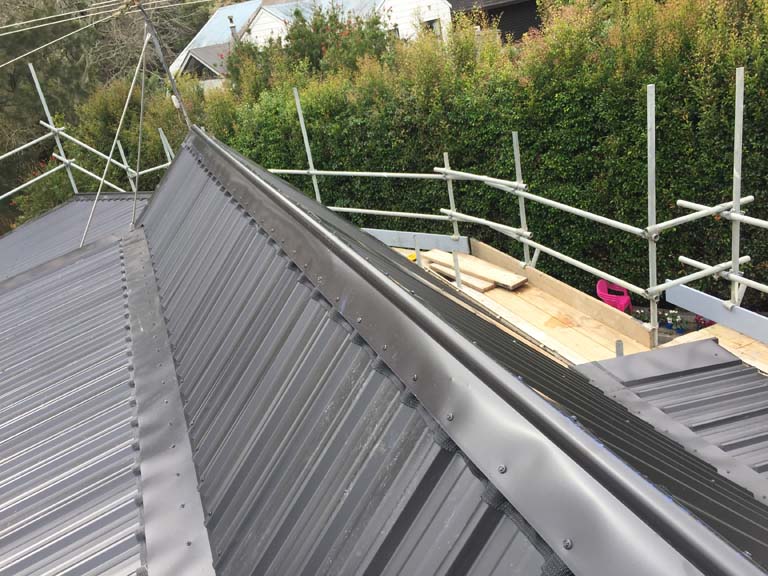Johnson Roofing provides expert metal roof flashings in Auckland to prevent leaks and protect your home with durable, professional installation.
Metal roof flashings are essential for keeping your home safe from water damage by sealing vulnerable points such as joints, edges, and intersections. They guide rainwater away from weak spots, helping your roof stay secure and watertight. Without proper installation, even a strong metal roof can develop leaks that lead to expensive repairs and structural issues.
How Flashings Work to Prevent Leaks
Metal roof flashings act as a protective barrier that seals vulnerable areas and redirects water away from seams, valleys, and roof penetrations. In New Zealand’s harsh climate of heavy rain and strong winds, they are essential in preventing moisture from entering the roof cavity. By ensuring proper water flow, flashings protect insulation, framing, and interiors while reducing the risk of mould, rot, and structural damage.
Types of Metal Roof Flashings
There are several types of metal roof flashings, each serving a unique purpose. Correct installation of these flashings ensures your roof provides reliable and lasting protection.
• Ridge Flashings – Ridge flashings cover the peak where two roof slopes meet. They prevent water and debris from entering at the highest point of the roof while giving a neat, finished look.
• Valley Flashings – Valley flashings are fitted in roof valleys where two slopes intersect. These areas carry large volumes of rainwater, making them highly vulnerable to leaks if not properly sealed. Valley flashings ensure smooth water flow and prevent pooling.
• Apron Flashings – Apron flashings protect the base of vertical structures such as chimneys, dormers, or skylights. They form a seal that prevents water from seeping into the junction between the roof and these features.
• Barge Flashings – Barge flashings are installed along the edges of the roof to shield against wind-driven rain. They also help secure the roof sheets in place, reducing the risk of uplift during storms.
• Sidewall & Headwall Flashings – These flashings are used where the roof meets walls, such as at extensions or lean-tos. Sidewall and headwall flashings prevent water from penetrating at these connections, which are otherwise prone to leaks.
You might also want to check out this guidance on roof flashings from the Victorian Building Authority for more detailed technical standards and best practices.
Signs Your Roof Flashings May Need Repair or Replacement
Over time, even well-installed flashings may deteriorate due to exposure to harsh weather conditions. Recognising early warning signs can help you avoid extensive damage. If you notice any of the following, it may be time to seek professional assistance:
• Rust, corrosion, or loose flashings.
• Water stains on ceilings or walls.
• Drips or dampness in the attic.
• Lifting or gaps between flashing and roof sheets.
Timely repairs or replacements not only extend the lifespan of your roof but also safeguard your home’s interior from moisture-related problems.
Durable Metal Roof Flashing in Auckland – Installed by Johnson Roofing
Investing in high-quality metal roof flashing installation and maintenance is one of the most effective ways to protect your property from leaks and water damage. At Johnson Roofing, we specialise in providing durable and expert roofing services tailored to New Zealand’s demanding weather conditions. Our team combines local expertise with premium materials to deliver long-lasting roofing solutions you can rely on.
If you suspect your roof flashings may need attention, do not wait for leaks to escalate into costly repairs. Contact us for a professional inspection and secure your home with the trusted protection of expertly installed metal roof flashings.
Related Blog Articles:
Roof Flashing Repairs: Stop Leaks with Professional Flashing Replacement
Roof Flashing Repairs Auckland: How to Protect Your Home from Costly Damage

